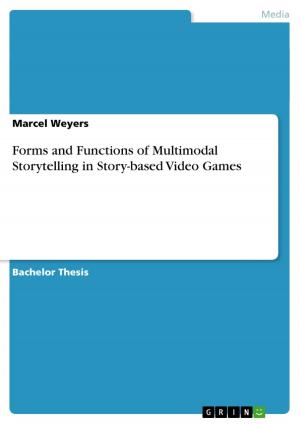The essentials of Computed Tomography and its application in cardiac imaging
Nonfiction, Health & Well Being, Medical| Author: | Christian Brugger | ISBN: | 9783640972104 |
| Publisher: | GRIN Verlag | Publication: | August 1, 2011 |
| Imprint: | GRIN Verlag | Language: | English |
| Author: | Christian Brugger |
| ISBN: | 9783640972104 |
| Publisher: | GRIN Verlag |
| Publication: | August 1, 2011 |
| Imprint: | GRIN Verlag |
| Language: | English |
Seminar paper from the year 2011 in the subject Medicine - Other, grade: 1,3, University of Applied Sciences Ulm (Informatik), course: Medizinische Bildverarbeitung, language: English, abstract: This paper introduces into the essentials of computed tomography and gives a brief lead-in to Cardiac CT, which is the clinical application of computed tomography in cardiac imaging. At first, the usage of X-rays is explained and the resulting main task of a CT scanner: The reconstruction of a three-dimensional image from the X-ray shadows, that are captured by the digital radiation detector unit. This reconstruction problem is known as the inverse problem in mathematics, which was initially solved by Johann Radon. Transferred to the field of computed tomography, the inverse problem means the definition of a volume dataset by reconstruction algorithms like for instance the Fourier Transform, which is shortly introduced, as well as the filtered backprojection. The main issue of Cardiac CT is the steady movement of the heart and chest of an examined patient. To ensure high image quality the scanner is triggered by a concurrently recorded ECG. ECG Triggering can ensure that the scanner only captues images during the phases of the heartbeat, where movement is minimal. One major application of Cardiac CT is non-invasive coronary angiography, which possibly could substitute invasive diagnostic surgeries like cardiac catheterization of non-emergency patients.
Seminar paper from the year 2011 in the subject Medicine - Other, grade: 1,3, University of Applied Sciences Ulm (Informatik), course: Medizinische Bildverarbeitung, language: English, abstract: This paper introduces into the essentials of computed tomography and gives a brief lead-in to Cardiac CT, which is the clinical application of computed tomography in cardiac imaging. At first, the usage of X-rays is explained and the resulting main task of a CT scanner: The reconstruction of a three-dimensional image from the X-ray shadows, that are captured by the digital radiation detector unit. This reconstruction problem is known as the inverse problem in mathematics, which was initially solved by Johann Radon. Transferred to the field of computed tomography, the inverse problem means the definition of a volume dataset by reconstruction algorithms like for instance the Fourier Transform, which is shortly introduced, as well as the filtered backprojection. The main issue of Cardiac CT is the steady movement of the heart and chest of an examined patient. To ensure high image quality the scanner is triggered by a concurrently recorded ECG. ECG Triggering can ensure that the scanner only captues images during the phases of the heartbeat, where movement is minimal. One major application of Cardiac CT is non-invasive coronary angiography, which possibly could substitute invasive diagnostic surgeries like cardiac catheterization of non-emergency patients.















